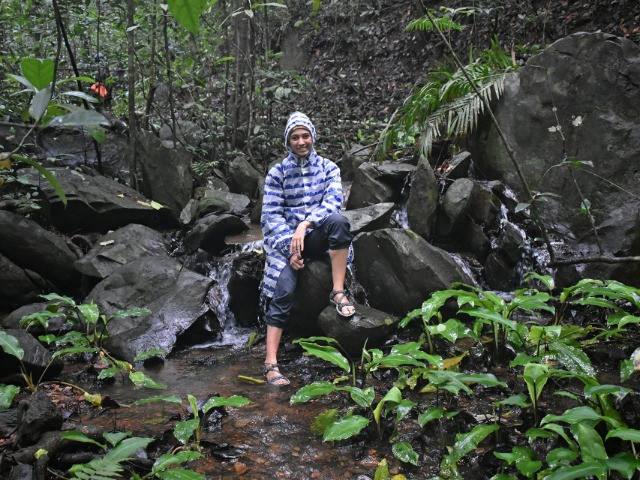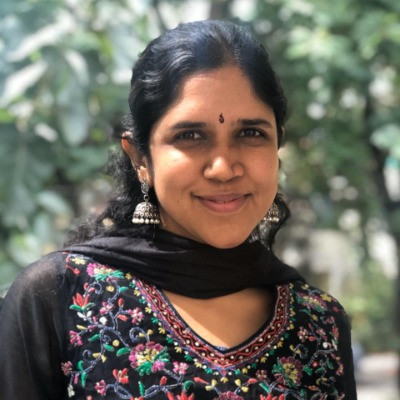Forest fires, melting glaciers, drought-cracked earth, polluted waters and bleached corals—the collage on the State of the Global Climate 2021 report presents a grim picture for the future of our planet. Among the report’s most talked-about findings are the record-high levels of ocean temperatures and acidification levels documented in the past year. Another recent study by researchers from the GEOMAR Helmholtz Centre for Ocean Research, Germany, the Institute of Geological and Nuclear Sciences Limited, New Zealand, and the University of Tasmania has shown for the first time that even the miniscule diatoms are impacted by ocean acidification. Diatoms are an important aspect of the underwater food chain and form a significant percentage of the ocean’s floral biomass. The study reveals how far-reaching the effects of global warming are and that the oceans need our immediate attention.
But on this World Oceans Day, we thought we would also share some hope besides the doom and gloom. Hope that stems from the fact that people are working relentlessly to protect the oceans. Hope kindled by the numerous young minds that have made it their mission to explore and understand the underwater world. Hope that arises from the promise that with collective action, we can see change. And to instil that hope in all of us, we asked young researcher Shreya Yadav to share her thoughts on some critical ocean-related issues.
Yadav is a marine biologist who is currently pursuing her PhD at the University of Hawaii in Manoa. She is close to the finish line as she is presently preparing to defend her dissertation on 'Investigating historical, social and ecological dimensions of coral reef resilience’.
Her research interests include coral reef ecology, social-ecological resilience, and marine historical ecology.In the past, she has written for us about the organisms that call the corals home. She has also shared scintillating images and facts about jellyfish. Her Instagram feed is a delight with glimpses of her world, both under and above water. She frequently attempts to share science with the larger masses through images, books and informative articles, bringing us metaphorically closer to the oceans. And she constantly shares hope through these endeavours. As she writes on her blog Surface Interval—"The science floats to the front of my brain. The word resilience swims around in there, unable to hook itself to a feeling. I remind myself that decades of research here has found that these particular corals will probably make it through."
On that note, here is Shreya Yadav.
Thank you for making time for this interview! I know that you are knee-deep in prep work for your PhD defence. Tell us a little bit about your academic journey and what inspired you to explore coral reefs.
Thank you for asking me to do this! It’s hard to trace it back to a single moment, but I think something inside me changed after my first dive off Havelock in the Andaman Islands, when I was 19. I was studying Zoology at the time. I had always loved water and wildlife in general, but I hadn’t witnessed the magic of a coral reef firsthand until then. I got my Master’s degree soon after in Marine Biology from James Cook University in Australia, where I studied box jellyfish for my thesis. But my heart was still in reef ecology, so I returned to India and began to work with the Nature Conservation Foundation (NCF) in the Lakshadweep archipelago. I learned a lot in those three years, not just about coral ecology (which is what I was primarily studying) but also about the challenges of addressing global conservation problems equitably at a local scale.
We are having this conversation for World Oceans Day. According to you, what are some of the most significant issues that the oceans face and how aware are people about these issues?
Without a doubt, climate change is one of the biggest threats to coral reefs worldwide. In the past five decades, coral cover has reduced by over 50 per cent globally. We need leadership that will tackle these challenges by investing in renewable energy while also putting into effect plans to manage and protect these habitats. But I think most people reading this are probably aware of that. I would say the other major issue we have is addressing overexploited fisheries. In most parts of the world, fish stocks are in severe decline or have already collapsed. I don’t think this issue gets enough attention. It is a complicated problem, but there are examples of sustainable practices and systems that we can implement. For example, when people watched Seaspiracy, a Netflix documentary on the impact of overfishing, their instant response was anger. But the issue is much more nuanced and complex and deserves more nuanced and complex coverage. We need to address various perspectives related to fisheries management, including implications for human rights, food security, and fisher livelihood, to be able to come up with sustainable solutions.
In the midst of what feels like endless doom and gloom, what keeps you going? What are some of the positive narratives about the oceans that you would like to share with our readers?
‘Climate despair’ is real. It’s hard not to feel overwhelmed by changes that seem to be out of our control, especially when public institutions fail us so often. I would recommend reading Derrick Jensen’s piece Beyond Hope in Orion Magazine. It always helps me reframe the problem. We really do have a lot of agency and itʻs good not to forget that. For me, it also helps to spend time diving or snorkelling and knowing that life, in many ways, will go on. I think revisiting places (even if it’s only through photographs) where recovery has occurred, often because of our decisions to ease a stressor or change a way of living, is also something that will help us stay hopeful. It is important to recognise that we have modified the environment in many ways throughout history, but not all of that has been negative. Several indigenous communities have sustained positive relationships with their environment through time, and there are valuable insights we can glean from them.
You may also like to read
Tell us about your first dive? How was the experience, and what changes do you see in the underwater world since then?
My very first dive—not on SCUBA, but while snorkelling—was in the Gulf of Mannar, on a family holiday. I must have been ten or eleven. I remember jumping off the boat and looking underwater for the first time, and right there under my feet, a vast coral colony rose to the surface. A school of brightly coloured fish circled around me. I freaked out a little! I got right back onto the boat and needed a bit of coaxing to get back in the water. I think that fear is a normal response to the unknown, but I am glad that my parents encouraged me to try again and later introduced me to diving. A lot has changed since that first dive—most coral reefs have been through two or three bleaching events in the past decade, so things do not look like what they used to. But there is still so much to observe and so much to learn, because these systems are so dynamic.
Please tell us a little bit about your research on the impacts of fish consumption on coral reefs in the Maldives. How can we use this information to devise better practices in India?
The values people give to a resource (like fish, for instance) determine how they are used and managed. Fish are not only important economically but also culturally and socially. My work in the Maldives aimed to understand value through the lens of people’s current consumption preferences and identify if, how, and why preferences for fish—specifically, reef fish and tuna—were shifting today. Understanding the variety of ways in which people relate to a resource is key to creating management plans that are rooted in local values.
What advice would you like to share with students who want to pursue marine conservation? Especially to encourage more women in this field of study.
Good mentors make all the difference. Before you start working with someone, definitely ask their students or colleagues what the work environment is like. Volunteering and interning widely can really help you understand where your interests lie. I also know that these opportunities are not accessible or easy for everyone. Conservation science can be elitist sometimes, and we really need to work to change that. But I would encourage students to look into local non-profits of interest and see how they can get involved. That would be a good first step to gauge your interests and explore opportunities.
What is a quick tip that you would like to share with our readers so they can all become more perceptive of the world around them?
Observe something happening outside today—anything—birds nibbling in the grass, ants on the bark of a tree. Write it down, or actively pay attention to it. Try to do it again tomorrow. I think active observation of—or attention to—the natural world can change us everyday.











